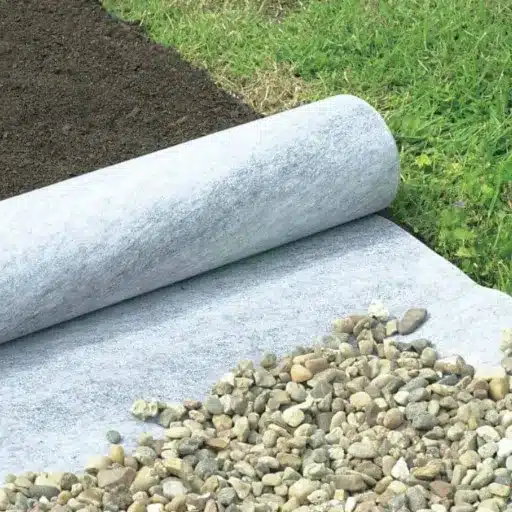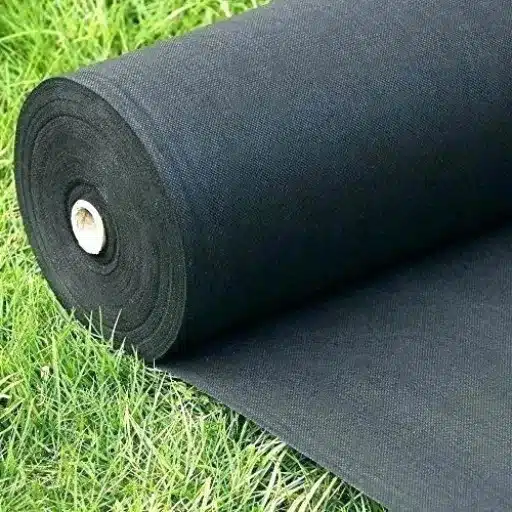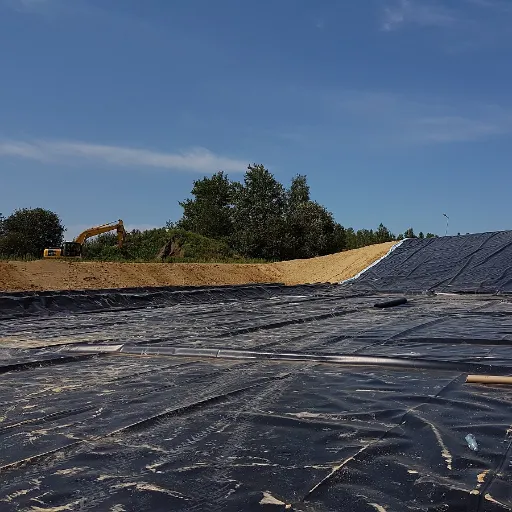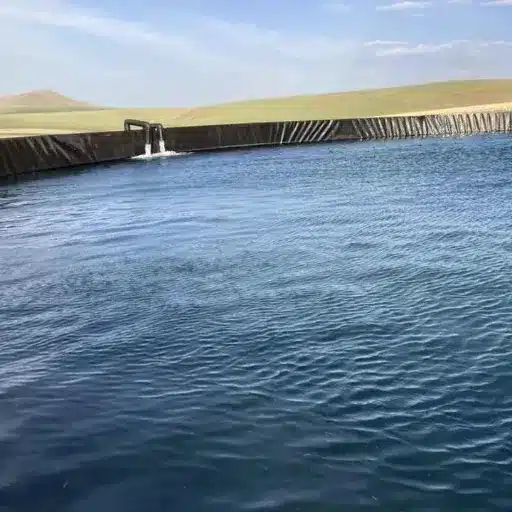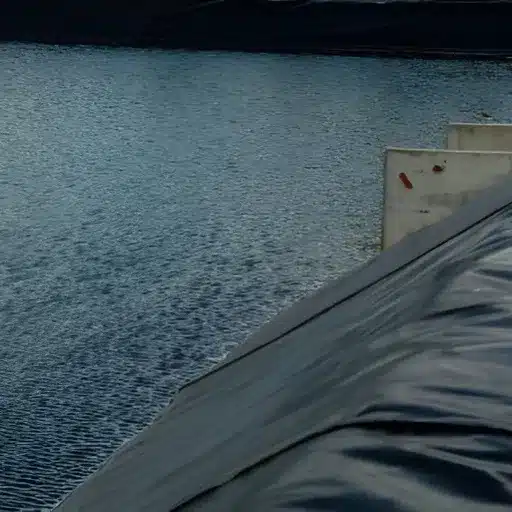Geotextile fabrics, the modern-day miracle materials, have already been associated with each step of construction, landscaping, and engineering projects. By stabilizing soil and controlling erosion, among others, this multifunctional fabric guarantees durability and efficiency of the infrastructure. But what is this fabric made of, actually, and what made it so indispensable for various industries? The article intends to present the various applications, kinds, and amazing merits of geotextile fabrics. It does not matter if you are a contractor, a landscaper, or just the one interested in sustainable construction methods, this guide will give you priceless tips on how geotextile fabrics influence the way we build and how we protect our environment.
Geotextile Fabrics Introduction
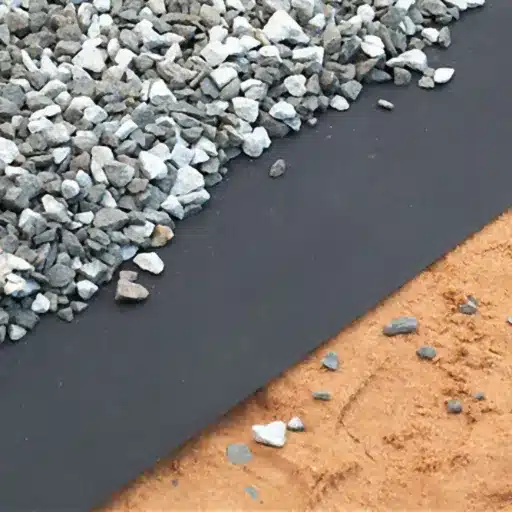
Geotextile fabric is a porous material applied in construction and landscaping as a way of soil stabilization, drainage improvement, and erosion control. Its nature has made it to be an obvious choice as it not only supports the building of infrastructures but also concurrently conserves nature and tackles various engineering problems in a very efficient manner.
Geotextile Fabrics Definition
Geotextile fabrics are permeable textiles made of either synthetic or natural fibers intended for civil engineering and environmental applications. They are specially designed to make the soil more stable, to prevent erosion, and to assist the drainage systems. In most cases, they are made from polypropylene or polyester which makes them last long and be resistant to various environmental conditions. Furthermore, they come in various types such as woven, non-woven, and knitted.
Market Insights
Recent industry data indicates a global geotextile market valuing approximately USD 8.3 billion in 2022 and an expected compound annual growth rate (CAGR) of 6.2% between 2023 and 2030. The growing market is largely due to the increasing demand for eco-friendly construction materials that are capable of stabilizing the soil, enhancing the drainage, and protecting the environment.
Geotextiles Importance and Applications
Geotextiles are materials that not only save but also increase the value of structures in the modern world; after all, they are environmental and engineering problems’ solutions at the same time. Recent research indicates that the global geotextile market value will reach $12 billion by 2027 with a compound annual growth rate (CAGR) of 10.3% from 2021 to 2027. This growth mirrors the growing demand for geotextiles in various applications due to their cost-efficiency, durability, and versatility.
Geotextiles Applications

Road Construction and Pavement Engineering
The use of geotextiles is very common in measures aimed at extending the service life of roads and making them more sustainable. The separation layer created by geotextiles between the soil and aggregate prevents the mixing of the materials, which then reduces the maintenance costs and, at the same time, improves the distribution of loads. As a result of the analysis, it has been found that roads built by reinforcing with geotextile can last up to 30% longer when compared with traditional roads.
Erosion Control and Coastal Protection
Coastal zones are highly erosive due to natural factors like waves, storms, and rising sea levels. Geotextiles are an important factor in making shorelines stable and preventing erosion since they create a strong layer that keeps the soil and sand in place. Their use opens up a slowly but surely getting popular, eco-friendly concrete alternative route. A case in point is when geotextile tubes and barriers are used to make artificial reefs, and thus, the beach erosion is effectively reduced.
Drainage Systems
Geotextiles are the indispensable elements of drainage systems in that they allow the water flow while the sediments are filtered out. They are used for efficient water management throughout the whole range of the sport field, retaining walls, and agricultural fields. Research has shown that the incidence of waterlogging is reduced by as much as 60%, thus, geotextiles are considered priceless in areas with a high water table.
Landfills and Waste Management
Geotextiles are used as a safety net for the containment systems at the landfills. They work as liners to contain the toxic material leakage which would have otherwise contaminated the soil and ground water thus posing a threat to the environment. It has been observed that the use of geotextiles in landfills has a positive impact in terms of decreasing the contamination risks by more than 40%.
Types of Geotextiles
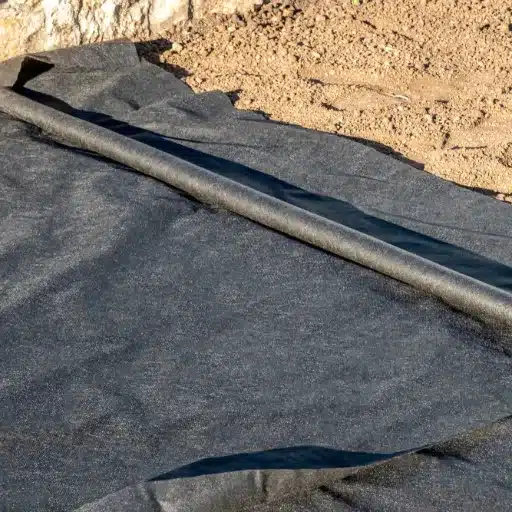
Woven Geotextile Fabrics
Woven geotextile fabrics are extremely durable and made from yarns that are interlaced to produce a stable and strong material. Their main function is to provide outstanding strength, thus they are the best choice for reinforcement in construction and civil engineering projects. These fabrics can not only withstand heavy weights such as those from roads, pavements, and retaining walls but also are less prone to suffer mechanical damage and deformation under tension.
Recent research has shown that the tensile strength of woven geotextiles ranges from 20 to over 200 kN/m which makes them suitable for various projects, including heavy-duty highways and large earthworks. Continuous improvement in material science has also given rise to polypropylene and polyester woven geotextiles that are exceptionally strong and resistant to UV radiation and chemical degradation.
Nonwoven Geotextile Fabrics
Nonwoven geotextile fabrics are different from woven ones since they bring different benefits and have a wide variety of applications. Their production involves needle punching or heat bonding, which locks polymer fibers to form a dense, felt-like material with outstanding permeability and excellent drainage capabilities. The versatility of nonwoven geotextiles makes them more suited for filtration, soil stabilization, and erosion control than their woven mates.
According to a market analysis conducted in 2023, nonwoven geotextiles are especially useful in water management systems as they can handle great influxes of water. To illustrate, nonwoven geotextiles have been proven to maintain their filtration efficiency while allowing up to 95% of water flow even during heavy rain. Besides, these fabrics can also be used in areas around drainage systems to prevent soil erosion and thus, facilitate sustainable land use practices.
Geotextile Fabrics Utilization in Multiple Sectors
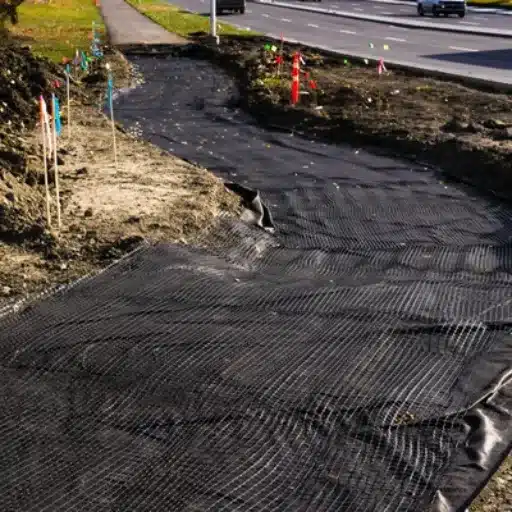
I am employing geotextile fabrics in different sectors, as they give beneficial answers for soil stabilization, water filtration, and erosion control. The construction, agriculture, and environmental industries have to rely on geotextiles as they are the main contributors to the increasing efficiency and sustainability of these fields.
Geotextile Fabrics in Construction
-
Road Construction
Among the major areas of geotextile application is road construction where the materials enhance subgrade stability and consequently help in cost-cutting overall maintenance. They facilitate separation, hence stopping the mixing of the soil layers and giving the road surface a longer lifespan. The data corroborates that the use of geotextiles in road construction can more than double the lifespan of roads, thus saving a lot of money on repairs.
-
Erosion Control
The nonwoven geotextiles are extremely useful in the control of soil erosion particularly in slopes and riverbanks. These fabrics are able to filter water while soil particles are being retained, thus preventing erosion resulting from heavy rain or flowing water. Areas where geotextile fabrics have been used as protection have up to a 90% reduction in soil loss compared to unprotected sites, according to research.
-
Drainage Systems
Geotextiles are majorly involved in filtration and drainage processes as the case may be for retaining walls and underdrains. Nonwoven fabrics allow through-their-structure water flow while catching fine soil particles thus eliminating the clogging and increasing the drainage efficiency of the overall system. The recent geotextile technology improvements have increased water filtration performance so that now the drainage capacity goes up by about 20%.
-
Reinforced Earth Structures
Geotextile fabrics work as a reinforcement in the case of retaining walls and embankments while the loads are distributed evenly and the soil is made stronger. They provide the open slopes and complex structures with a decreased amount of the material needed thus cutting project costs by up to 30%.
Landscaping and Erosion Control with Geotextiles
Geotextiles have demonstrated their worth in landscaping and erosion control, providing practical, dependable solutions for mitigating soil erosion and stabilizing terrains. They serve as protective covers that support plant life while preventing valuable topsoil from being eroded, especially in places that suffer a lot from heavy rainfall, steep slopes, or strong winds. New findings from the research carried out recently indicate using geotextiles in erosion control projects can result in a soil loss decrease of up to 85% compared to untreated land.
One of the applications that are often encountered is the construction of retaining walls, where geotextiles not only enhance the structural integrity of the wall by improving drainage and reducing the pressure on the wall but also a major role in controlling sediment runoff into nearby water bodies thus contributing to the upstream improvement of water quality and environmental conservation. According to data from recent studies, the use of geotextile silt fences can filtrate sediments at rates exceeding 90% efficiency in preventing the sediments from entering streams and rivers.
Benefits of Using Geotextile Fabrics
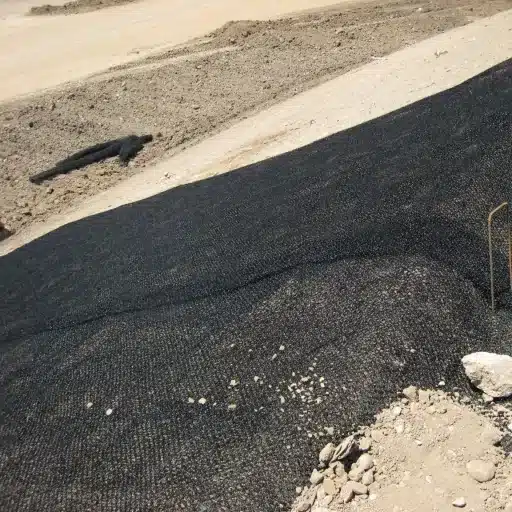
I have gained a lot from using geotextile fabrics because they are wonderful in the aspects of drainage, structural stability, and rather successfully, controlling sediment runoff. Their filtering sediments and at the same time, saving nature, position them to be a very good and eco-friendly choice in many projects.
Soil Stabilization and Reinforcement
Geotextile fabrics are a basic necessity in soil stabilization and reinforcement applications. They support the soil’s structural integrity thereby eroding, displacing, and providing support for construction projects. This is especially vital for roadways, foundations, and retaining walls where stability is very important.
Recent statistics reveal that geotextiles have the ability to give soil a load-bearing capacity of 50% more, which means that maintenance costs can be drastically cut down in the long run. The load applied is very well distributed over a broader area by these fabrics thus the possibility of uneven settling or structural failure is minimized. In addition, places that are at risk of landslides or get a lot of rainfall, the installation of geotextiles will be the most effective way to stop the erosion of soil as they will be water permeable, but still hold soil particles in place.
Cost-Effectiveness and Durability
Geotextiles continue to be a technology with a host of benefits but at the same time a very economical choice in a wide range of civil engineering and landscaping projects thus being the most cost-effective option. The extended service life of geotextiles as a result of their durability leads to less frequent maintenance or replacement and hence a significant reduction in long-term costs. Recent industry reports indicate that the lifespan of quality geotextiles is between 20 and 50 years, depending on the type of material and the conditions in which they are being used.
The cost of initial installation of geotextiles is also not much when compared with that of the traditional methods. For example, if geotextiles are used in erosion control or drainage, they could lead to a soil stabilization cost cut of 30% as the large scale replacement or excavations are not necessary. Also, new techniques in manufacturing have led to the introduction of geotextiles made of polypropylene and polyester which are quite resistant to wear and tear, and exposure to chemicals thus guaranteeing durability even in hostile environmental conditions.
Geotextile Technology Innovations

Geotextile technology innovations have played an important role in the enhancement of the efficiency, cost-effectiveness, and the durability of the products. I think the combination of new polymers like polypropylene and polyester, together with modern manufacturing processes will make these materials very resilient in harsh conditions and at the same time keep the costs down in overall project scale.
The Latest in Fabric Weaving
The latest in fabric weaving technology is opening huge possibilities for the geotextiles to perform better and for wider applications. Amongst the new technologies is the 3D weaving and nanofiber integration that contributes to the tensile strength and flexibility of the materials. For example, the current use of high-density polyethylene (HDPE) together with advanced weaving technique can give a strength increase of 30% over traditional methods, thus becoming the material of choice for the heavy-duty civil engineering projects.
Besides, new weaves that interlink synthetic fibers with natural ones, such as jute or coir, have been a step towards the environmental-friendly applications. These hybrid geotextiles are long-lasting and completely biodegradable, which, in turn, ensures that there is minimum impact on the environment. As per a recent article in the Journal of Materials Science, these exclusive weaves can double the lifespans of materials compared to purely natural ones without any sustainability compromise.
Geotextile Fabrics Market with Good Quality
A market for geotextile fabrics of superior quality is witnessing flourishing growth very fast, the main reason being the breakthroughs in material science and the rising global demand for infrastructure. The major raw material in the manufacturing of geotextiles is either polyester or polypropylene, giving the product a high level of durability and resistance to different environmental factors. Such fabrics are divided into woven, non-woven, and knitted types of geotextiles based on their properties and applications such as drainage, stabilization, and soil reinforcement.
Market Growth Projection
The most recent market studies predict that the geotextiles market will scale up from $8.7 billion in 2023 to $13.2 billion in 2028, thus making a CAGR of around 8.5% through this period. The segment of woven geotextiles is the largest owing to their considerable tensile strength which renders them suitable for soil reinforcement and erosion control applications. In the same way, non-woven geotextiles are becoming increasingly popular for drainage and filtration applications because of their permeability.
Reference Sources
-
TexDelta Blog
- Title: Geotextile fabric: uses and applications
- URL: TexDelta
- This source discusses the various applications of geotextile fabrics, including road reinforcement, slope stabilization, and drainage improvement.
-
EcoGeox Resources
- Title: Geotextile fabric: uses and applications
- URL: EcoGeox
- This resource highlights the use of geotextile fabrics in civil and environmental projects, both for private and public applications.
-
Wikipedia
- Title: Geotextile
- URL: Wikipedia
- Wikipedia provides an overview of geotextile fabrics, their functions, and their applications in conjunction with soil for various engineering purposes.
Frequently Asked Questions (FAQs)
What are the common uses of geotextiles?
Geotextiles find their way into many applications like civil construction, landscape architecture, and the prevention of soil erosion. They are essential for many geotechnical projects providing soil stabilization, filtration and draining. There is no doubt about their versatility which means that they can be used in many different environments and conditions.
What is the difference between woven and nonwoven geotextiles?
The distinction of woven and nonwoven geotextiles is their manufacturing process. Woven geotextiles are made by interlacing the fibers which then result in high tensile strength and load capacity. Nonwoven geotextiles are the opposite; they are made by fusing fibers using some mechanical, thermal or chemical means—thus giving the product the excellent filtration and draining properties.
How is nonwoven geotextile fabric made?
Needle punching or heating bonding are some of the methods that are commonly used in making nonwoven geotextiles, wherein, synthetic fibers are bonded together. Consequently, a fabric that is porous is obtained and that allows lateral of drainage water movement while effective filtration is still going on.
What types of geotextile fabrics are available?
Many different types of geotextile fabrics such as woven, nonwoven and composite geotextiles are offered on the market. The different types serve various functions; e.g. reinforcement in construction projects or filtration in drainage applications.

